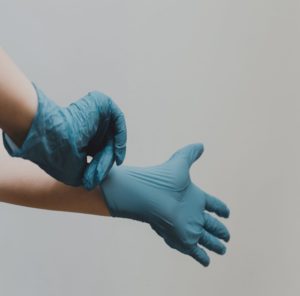Last time readers dropped by, plenty of great information on Barret’s esophagus was shared. For patients suffering with this gastro issue, the quality of life can be majorly affected. Today, we are sharing how the diagnosis process works and options for low-grade dysplasia treatment.
Degree of tissue change:
In our recent post, we shared that a pathologist that specializes in gastroenterology pathology should confirm the diagnosis. At least two doctors should agree on the diagnosis. The degree of tissue change can be classified three different ways.
First there is no dysplasia. If the Barret’s esophagus is present but there is no evidence of precancerous changes are found in the cells, the patient will be diagnosed with no dysplasia.
For patients with no dysplasia, a periodic endoscopy to monitor the cells in the esophagus will be required. When the biopsies show no dysplasia, the patients will most likely have a follow-up endoscopy in one year. After that, an endoscopy will only be required every three to five years if no changes have occurred.
Treatment for GERD may vary slightly person to person. Medication and lifestyle changes may ease signs and symptoms enough. Lifestyle choices may look like early dinner times, not laying down after eating, and avoiding acidic foods.
Surgery or endoscopy procedures may greatly reduce signs and symptoms if medication and lifestyle changes do no suffice. A surgery or endoscopy may be necessary to correct a hiatal hernia or for the purpose of tightening the lower esophageal sphincter. Remember, the esophageal sphincter controls the flow of stomach acid, so when it is not loose anymore, it stops or reduces the burning sensation or “burping up” issues.
Low-grade dysplasia treatment:
When a doctor says they saw low-grade dysplasia, it means they saw signs of the early stage of precancerous changes. If low-grade dysplasia is found, it must be verified by an experienced pathologist. Your doctor may recommend another endoscopy in six months if low-grade dysplasia is found in your cells.
After that, follow up every six to twelve months. Because of the risks of esophageal cancer, treatment may be recommended if the diagnosis is confirmed. There are multiple treatment options.
Your gastroenterologist may recommend an endoscopic resection. This uses an endoscope to remove damaged cells to aid in the detection of dysplasia and cancer. If you doctor does not opt for that, they may recommend a radiofrequency ablation.
 A radiofrequency ablation utilizes heat to remove abnormal esophagus tissue. This procedure may be great after an endoscopic resection too. Lastly, cryotherapy may be ordered.
A radiofrequency ablation utilizes heat to remove abnormal esophagus tissue. This procedure may be great after an endoscopic resection too. Lastly, cryotherapy may be ordered.
Cryotherapy uses an endoscope to apply a cold liquid or gas to abnormal cells in the esophagus. The cells are warmed up and then are frozen again. This cycle of freezing and thawing damages the abnormal cells.
If there is significant inflammation of the esophagus tissue during the first endoscopy, the patient will undergo a second endoscopy after three months of receiving stomach acid-reducing treatment.
Next time, follow up as we share about high-grade dysplasia. If you suffer from GERD, contact our experienced gastroenterologists located near you. Get treated soon, so you can enjoy upcoming holiday dinners!
Staff Writer
